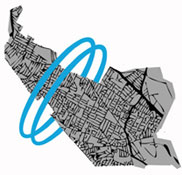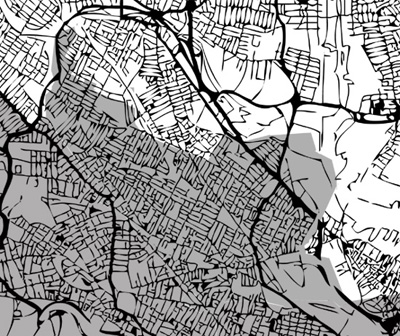
| 2010s | - | 2020s | - | 2030s | - | 2040s | - | 2050s | - | 2060s | - | 2070s | - | 2080s | - | 2090s | - | 2100 | |
| 2050 | - | 2051 | - | 2052 | - | 2053 | - | 2054 | - | 2055 | - | 2056 | - | 2057 | - | - | 2059 |
|
2050: Somerville
and Cambridge merge. Click on a decade or year above to read about the future.
|
Introduction to the 2050s Somerville and Cambridge merge; the new combined city is called "Somerville." Perhaps because of the difficulties of such a merger, there is a major recession in 2052. To cut costs, city hall is sold as condos, libraries are shut, and the Arts Council loses its funding. To make matters worse, Godzilla attacks Davis Square, destroying dozens of buildings. Due to rising water levels, the city experiences major drainage problems; water quality drops as a result, and many low-lying apartments and businesses are abandoned. Soon after, another hurricane strikes. Many low-lying parcels are flooded, and there is extensive damage to property near the Mystic. To better cope with these catastrophes, political boundaries are redrawn again; the new Somerville now merges with Charlestown and a portion of Medford. This new city is called "Peninsular City." Union Square is the new high-end neighborhood, and long-time residents are forced to relocate due to rising rents. The city finally addresses the fact that its aging 2- and 3-family homes are crumbling; it passes a law requiring them to be demolished and replaced with mid-rise buildings. Despite the recession, the Boston area is now a cultural and economic capital. Zoning laws have changed in the urban area; 65% of homes are now multi-family. The work week is reduced to 30 hours, leaving people more free time. Harkening back to the days of the 2010s, residents spend this time in community-related activities, and in gardening; Somerville residents grow 20% of their own food. The Mafia and the Freemasons are now hugely influential; they are both involved in city-wide organized crime, and in worldwide philanthropy. Cars are back in use; but their impact on the environment is offset by popular use of biodiesel. Highways are rebuilt, and designed to accommodate buses, bikes, and scooters. The MBTA is now ultra-efficient, and also offers a limo service; service is free in downtown Boston. India has become a major global power, while the US's influence has waned. The 2040s trend away from state-centered power has continued to the point that governments can no longer enforce all rights or laws; this role is left to companies and non-governmental organizations. The world population, which remained relatively stable from the 2010s to the 2040s, suddenly explodes. There are now over 9 billion people, 2 billion of which are Muslim. 100 million people now have Alzheimer's. Greenhouse gases
are cut worldwide. Half of the world's energy comes from renewable
sources. Perhaps because robots are now more intelligent than the
average human, people have started to find their robots romantically
attractive; robot-human sex and marriage are now common.
|
